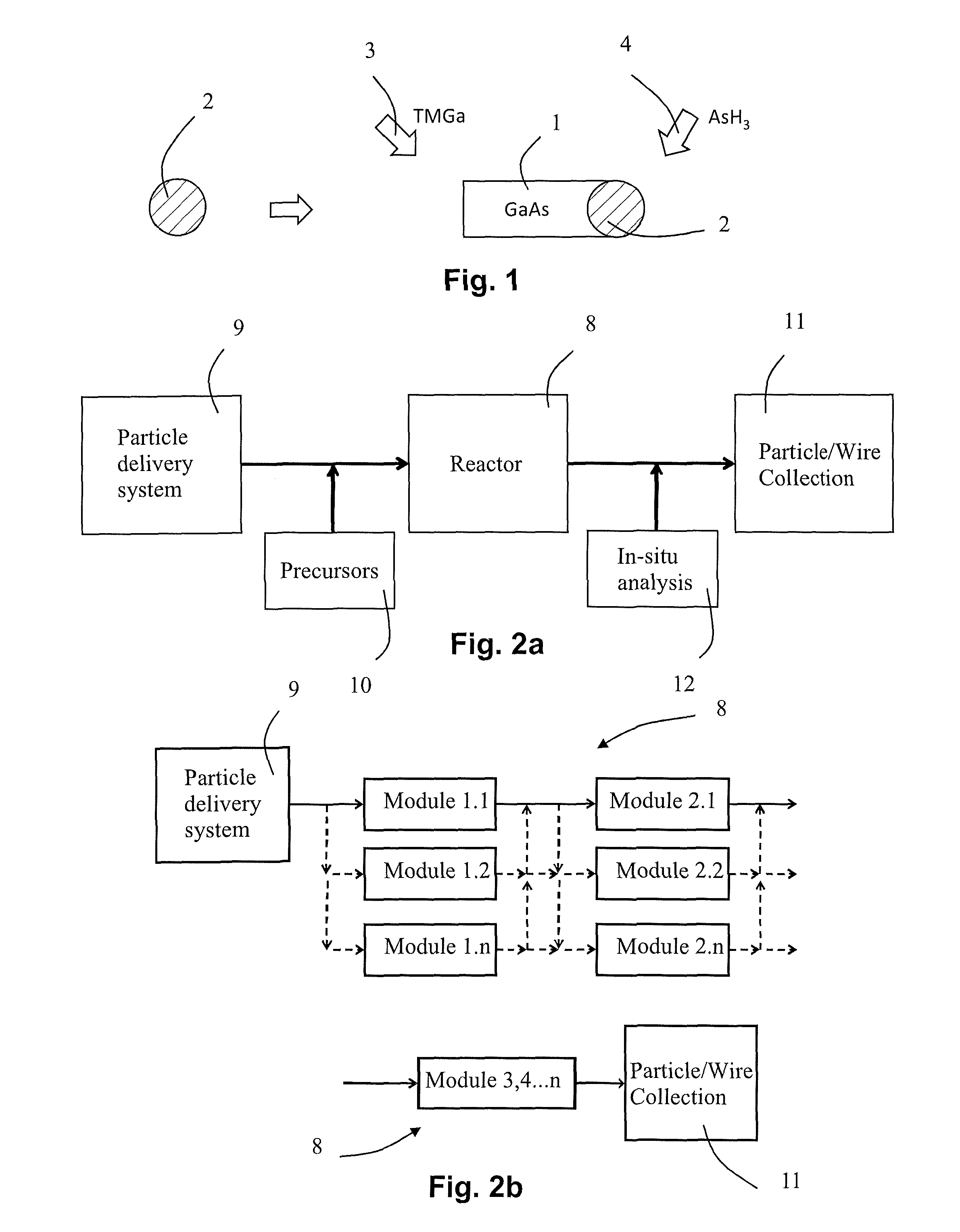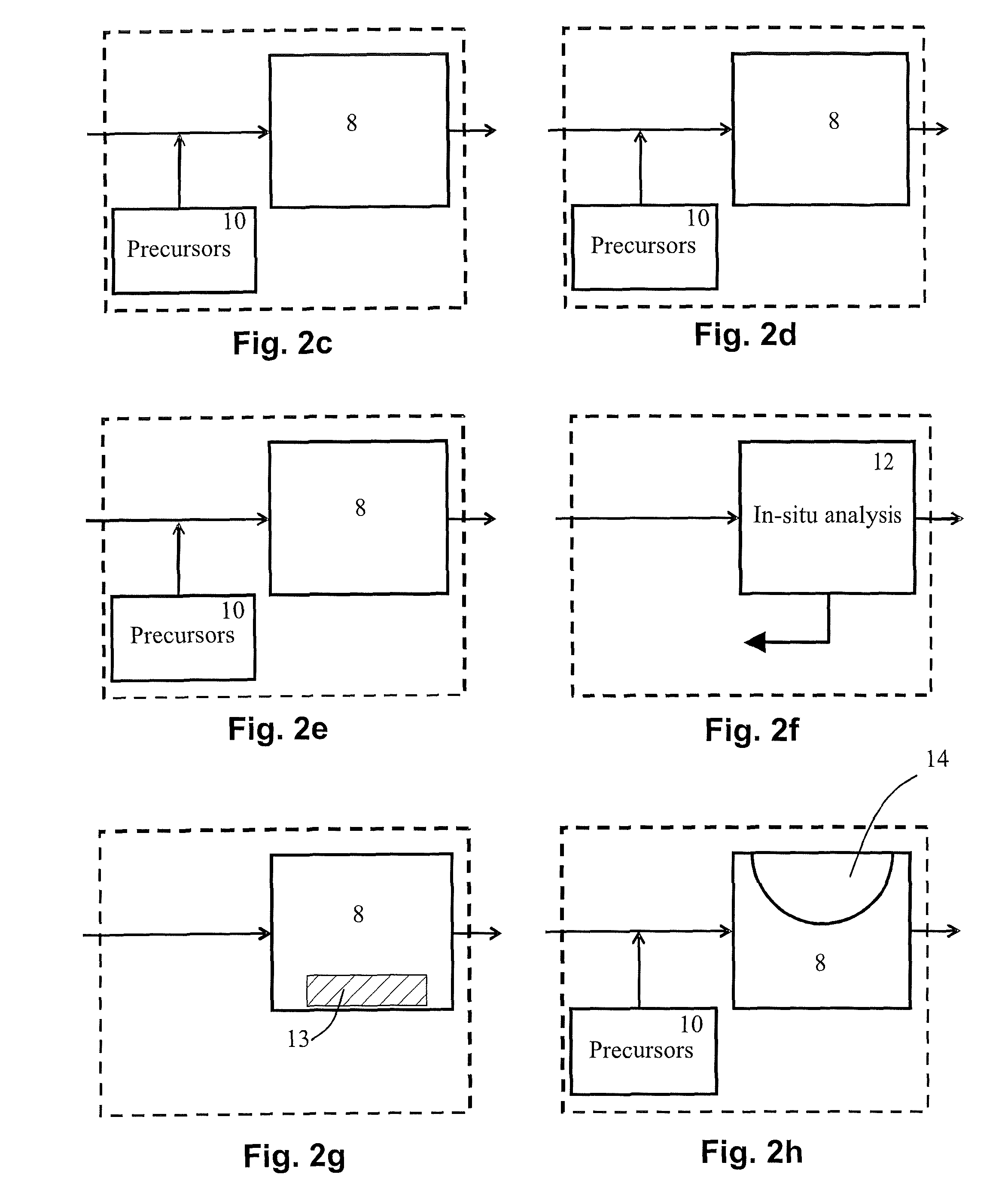Gas-phase synthesis of wires
a wire and gas-phase technology, applied in the field of wire formation, can solve the problems of scalability of the process, and limited production cost and through-put, and achieve the effect of high ra
- Summary
- Abstract
- Description
- Claims
- Application Information
AI Technical Summary
Benefits of technology
Problems solved by technology
Method used
Image
Examples
Embodiment Construction
[0044]For the purpose of this application the term wire refers to an elongated object. As mentioned above, these wires may be of essentially nanometer dimensions in their width or diameter, commonly referred to as nanowires, nanowhiskers, nanorods, etc., however not limited to this.
[0045]Referring to FIG. 1, basically a method for forming wires in accordance with the invention comprises[0046]providing catalytic seed particles2 suspended in a gas,[0047]providing gaseous precursors 3, 4 that comprises constituents of the wires 1 to be formed, and[0048]growing the wires 1 from the catalytic seed particles 2 in a gas-phase synthesis including the gaseous precursors 3, 4 while the catalytic seed particles are suspended in the gas.
[0049]The growth, or at least part thereof, is performed at an elevated temperature, typically in a furnace or some other kind of reactor, and starts with an initiation of the growth by catalytic decomposition of the gaseous precursors 3, 4 on the surface of the...
PUM
| Property | Measurement | Unit |
|---|---|---|
| temperature | aaaaa | aaaaa |
| temperature | aaaaa | aaaaa |
| size | aaaaa | aaaaa |
Abstract
Description
Claims
Application Information
 Login to View More
Login to View More - R&D
- Intellectual Property
- Life Sciences
- Materials
- Tech Scout
- Unparalleled Data Quality
- Higher Quality Content
- 60% Fewer Hallucinations
Browse by: Latest US Patents, China's latest patents, Technical Efficacy Thesaurus, Application Domain, Technology Topic, Popular Technical Reports.
© 2025 PatSnap. All rights reserved.Legal|Privacy policy|Modern Slavery Act Transparency Statement|Sitemap|About US| Contact US: help@patsnap.com



